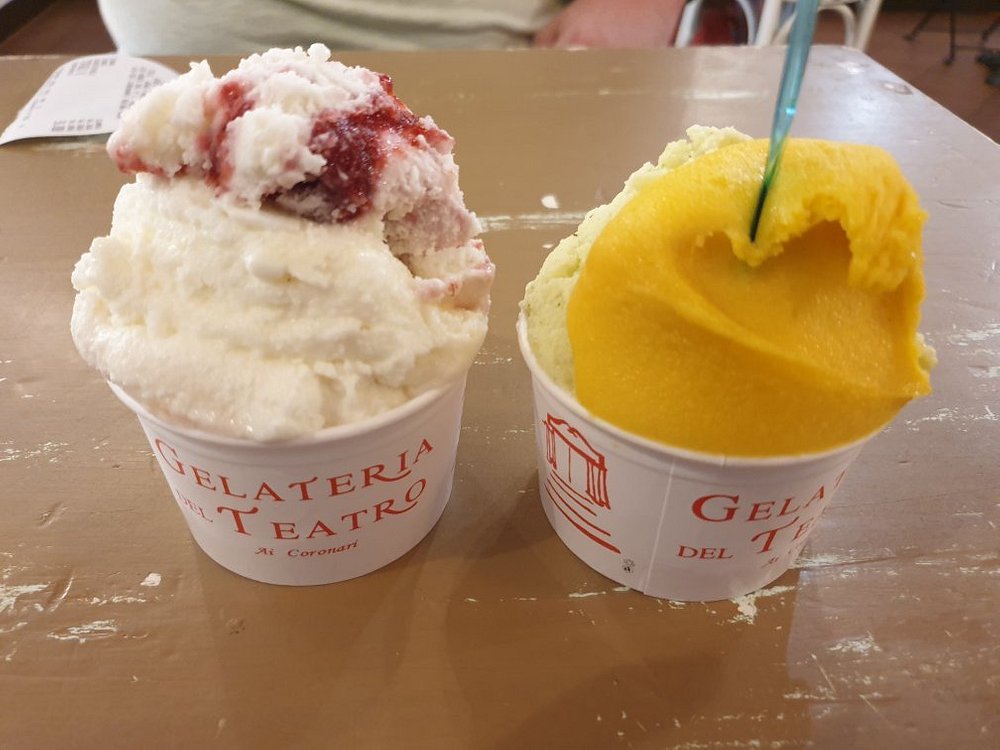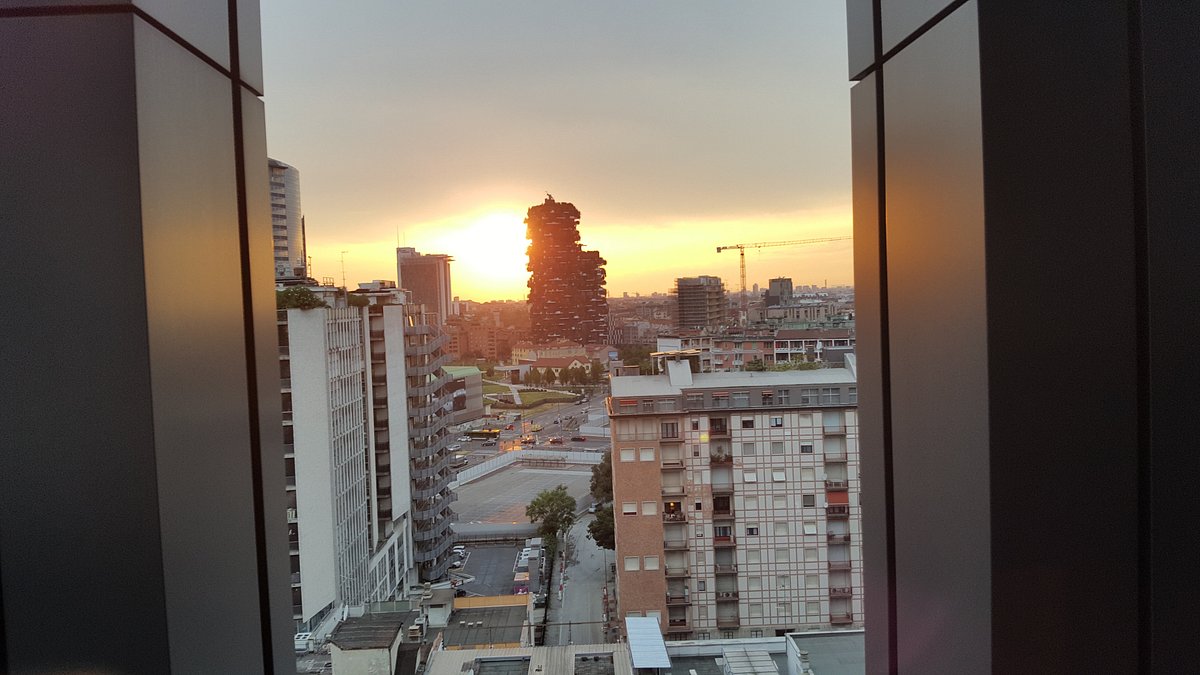Traveling to Italy doesn’t have to be a whirlwind of packed schedules and endless sightseeing. Imagine a vacation where you savor every pasta dish, stroll through charming streets at your own pace, and truly soak in the Italian lifestyle. That’s what a lazy travel guide to Italy offers. Relax, unwind, and let Italy’s beauty reveal itself to you naturally.
Plan your trip with a mindset of leisure. Italy’s rich history and gorgeous landscapes are best appreciated when you’re not rushing around. Instead of trying to see everything, pick a few key places and experiences that spark joy. You’ll find that slowing down and taking in the small moments makes your trip truly memorable.
1) Best Gelato Spots in Rome
Rome is a city bursting with history, culture, and delicious gelato. Finding the perfect scoop can feel like an adventure in itself.
One place you ought to check out is Gelateria Fassi. Established in 1880, it’s known as the “Palazzo del Freddo” or Frozen Palace. Strolling in there feels like a visit to a family museum, with photos and clippings on the walls.
Another gem is Günther Gelato Italiano. Its three locations in the heart of Rome make it convenient no matter where you find yourself. Each spot is always busy but well worth the wait.
Gelateria del Teatro is a must-visit too. Part ice cream shop, part chocolatier, their delights are truly special. Located in picturesque spots around the city, it blends the best of both worlds.
Lastly, don’t miss Gelateria Come il Latte. This spot is popular among locals and tourists alike. From classic chocolate to creamy stracciatella, every flavor feels like a little piece of heaven.
So, grab a cone, sit by a fountain, and enjoy the sweet life in Rome.
2) Hidden Beaches on the Amalfi Coast

Imagine strolling along secluded stretches of sand, with the sound of waves and a gentle breeze for company. The Amalfi Coast, with its stunning cliffs and turquoise waters, is home to some hidden beaches that offer just that.
Clearwater Bay in Maiori is a less crowded spot. Tucked away from the main tourist areas, it offers a more peaceful experience.
Next, Furore Beach lies under a dramatic bridge. You’ll love the picturesque setting and the sense of being a world away from the hustle and bustle.
Gavitella Beach in Praiano is another gem. It’s known for its lovely views and the chance to relax undisturbed, making it perfect for a quiet afternoon.
Laurito in Positano is small but charming. Accessible mostly by boat, it gives you that exclusive feel without the crowds.
Tordigliano Grande and Piccola are secluded and require a bit of a hike, but it’s worth it. You’ll be rewarded with uncrowded sands and clear waters.
Visiting these hidden beaches can make your trip feel like a well-kept secret shared with just a lucky few.
3) Top Aperitivo Bars in Milan
Let’s talk about aperitivo spots in Milan, a city that knows how to unwind after a long day. Picture this: the sun sets, and the city transforms into a haven of cool bars where you can sip and snack.
One of my go-to places is LaGare Rooftop Bar. Perched high on the 13th floor, this spot offers sweeping views of Milan’s skyline. The vibe is ultra-modern, making it perfect for an Instagram shot. Grab a drink and some finger foods, and soak it all in.
If you want something a bit artsy, Straf Bar might be your scene. It’s next to the Duomo and feels like a tiny art gallery. Don’t worry; it’s laid-back enough for everyone. Locals spill out onto the red sofas outside when the weather’s nice. The aperitivi here are pretty creative and worth a try.
Then there’s Carico, located on Via Savona. This place mixes traditional Italian bites with modern twists in a cozy setting that feels just right. The cocktails are inventive, and the menu is always changing, which keeps things exciting.
Lastly, Radio Rooftop Milan is the spot if you want to feel posh. It is located on the 10th floor of the ME Milan Il Duca Hotel and offers a chic experience from the moment you enter. It is a bit pricier, but the views and the vibe are more than the makeup.
Trust me, these bars capture the essence of Milan’s aperitivo culture. So, next time you’re in town, check them out.
4) Charming Villages in Tuscany

Tuscany has some of the most charming villages you’ll ever see. Imagine strolling through cobblestone streets, surrounded by medieval architecture. These villages offer a great escape into a relaxed, slower pace of life.
One standout is Populonia. Sitting on a clifftop above the Tyrrhenian Sea, it has fewer than 20 residents. The atmosphere here screams tranquility. The ancient tree-lined road leads you to a beautiful castle with historic walls.
Another gem is Arezzo, which is world-famous for its ceramics and metalwork. This town feels like a hidden pearl. Walking through its streets, you’ll find fascinating shops and local crafts.
Then there’s Portoferraio, the capital of Elba Island. Known as “Iron Harbour,” it was once an iron trading hub. Now, it’s one of the most charming harbor towns you’ll visit. It’s the perfect spot to explore Italy’s stunning coastline.
Certaldo is another village you can’t miss. Built between the 12th and 15th centuries, it’s one of the few medieval hamlets still perfectly preserved. Every corner you turn here feels like stepping back in time.
Lastly, don’t forget Pienza. Rebuilt in the 15th century by Pope Pius II, it’s known as the “ideal town.” Pienza even made it onto the UNESCO World Heritage list. The scenic views of Val d’Orcia and beautiful streets will leave you in awe.
See Related: Most Beautiful Islands in Italy to Visit
5) Scenic Train Rides Through the Alps
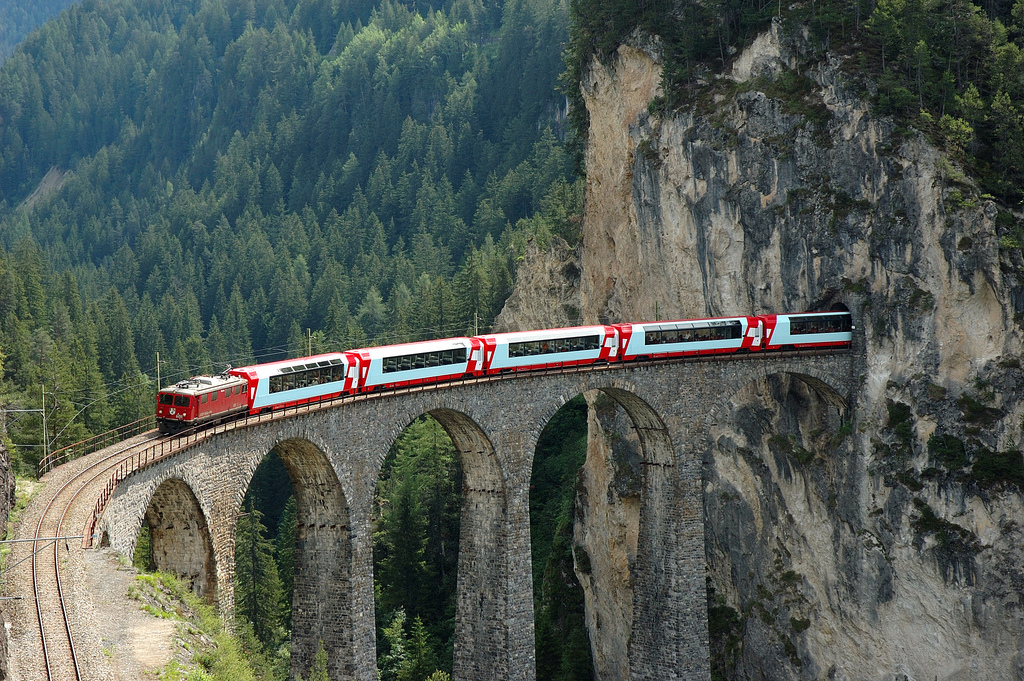
There’s something magical about chugging through the Alps on a train, don’t you think? One of the finest routes is the Bernina Express. Starting in Italy and ending in Switzerland, this ride gives you breathtaking views of the mountains, lakes, and quaint villages.
The Glacier Express is another gem, connecting Zermatt and St. Moritz. It’s known as the slowest express train, which means more time to soak in those amazing views from the panoramic windows. The ride offers stunning sights like the Rhone Glacier and deep gorges.
Ever tried the GoldenPass Express? This Swiss route takes you from Interlaken to Montreux. You’ll travel through picturesque scenery, rolling hills, pretty towns, and the magnificent Alps.
And then there’s the Montenvers Train in Chamonix, France. This little red train climbs up to 1913 meters, taking you close to the Mer de Glace glacier. It’s a short ride but packed with gorgeous views.
These train journeys allow you to relax and enjoy the beauty of the Alps without breaking a sweat. So, grab a comfy seat, maybe a snack, and let the Alpine scenery unfold outside your window.
6) Best Pizza Places in Naples

Naples is the birthplace of pizza, so you’re in for a treat. One must-visit spot is Pizzeria Di Matteo. Nestled on Via dei Tribunali, this pizzeria is on a lively street and is famous for its food. Imagine biting into a slice with a perfectly crispy crust dripping with gooey mozzarella. Truly, it’s a slice of Neapolitan heaven.
Another gem is L’Antica Pizzeria Da Michele. Known worldwide, this simple, no-fuss pizzeria became more famous after Julia Roberts enjoyed a pizza here in “Eat Pray Love.” Expect long lines, but the pizza is worth the wait.
Sorbillo is another favorite. This place is so popular that locals line up around the block. Each pizza is a work of art, with fresh ingredients and an unbeatable taste that’s truly authentic.
For a unique taste, head to Diego Vitagliano. While known for traditional pizzas, they also offer excellent gluten-free options, making it a great choice if you have dietary restrictions.
Sometimes, the best way to experience Naples is by enjoying pizza from different pizzerias. Each place has its twist, offering a new adventure for your taste buds with every visit. So grab a slice, relax, and enjoy Naples!
7) Historic Landmarks in Florence
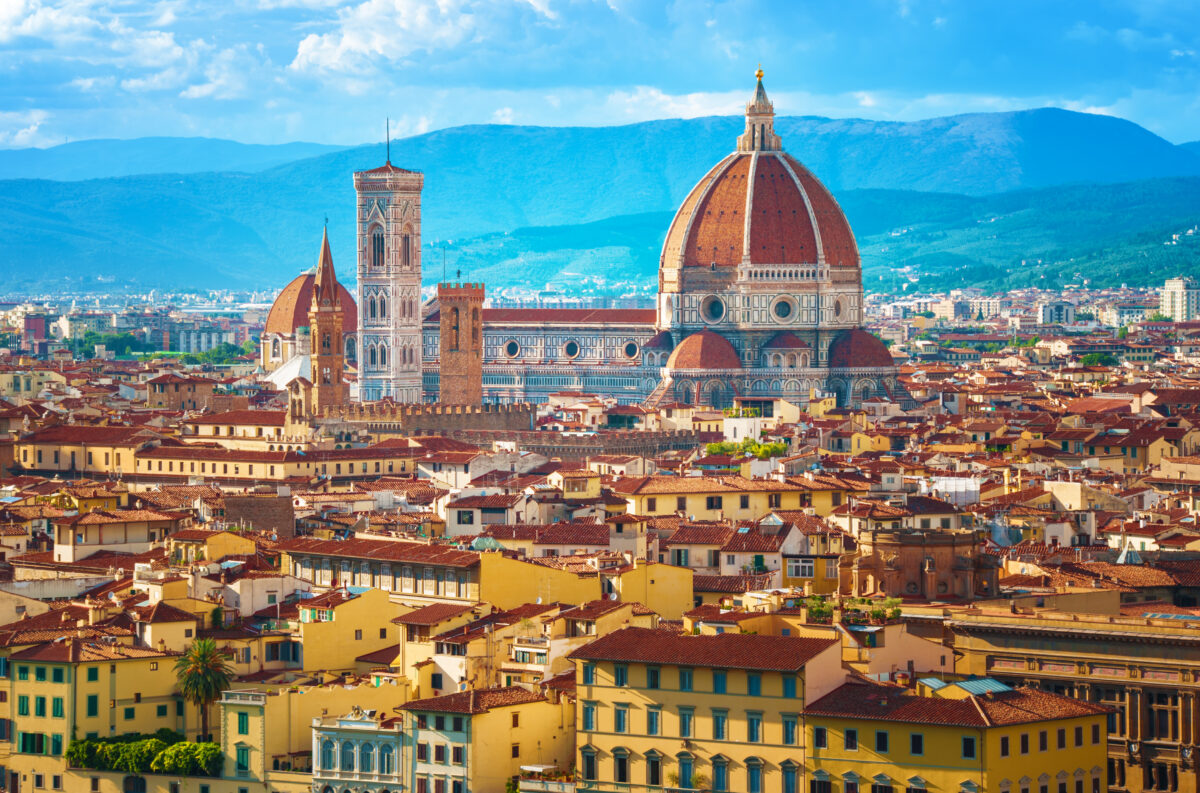
Florence is a treasure trove of history and beauty. The Santa Maria del Fiore Cathedral, also called the Duomo, stands out. Its massive dome and colorful façade are unforgettable. You can even climb to the top for a panoramic view.
Palazzo Vecchio, the town hall, is another must-see. It’s full of art and history. The tower offers a great view of the city. Just walking through its halls, you feel the weight of centuries.
Then there’s the Uffizi Gallery. This museum houses works by masters like Michelangelo and Leonardo da Vinci. You could spend hours here lost in the art. Even the building itself is an architectural marvel.
Don’t forget the Ponte Vecchio. This medieval bridge is lined with shops selling jewelry and keepsakes. It’s an ideal spot for a stroll, and the views of the Arno River are stunning.
Campanile di Giotto, the bell tower next to the Duomo, is another gem. Climbing its steps is a bit of a workout, but the view is worth it. Each level has intricate details and carvings.
Lastly, visit the Basilica of Santa Croce. Famous figures like Galileo and Michelangelo are buried here. The church is full of beautiful frescoes and a sense of serenity.
8) Breathtaking Views from Cinque Terre

Cinque Terre is a gem on the Italian Riviera. Imagine standing on a cliff’s edge, gazing at the turquoise sea stretching into the distance. Each of the five villages offers its own unique, stunning views.
In Manarola, the colorful houses sit perched on rugged cliffs. It’s the perfect spot for your postcard photo to show off.
The view from the Doria Castle in Vernazza is spectacular. It shows the village’s charming harbor and boats bobbing in the water.
Corniglia is the only village not directly on the water, and it offers panoramic views of the Mediterranean. The climb up might be hefty, but trust me, it’s worth every step.
Monterosso offers a mix of beach and hillside views. The scenery will amaze you whether you’re lounging on the sand or hiking up the hills.
And don’t forget Riomaggiore. The view of its narrow streets cascading down to the sea is like a dream.
So, grab your camera, take a deep breath, and soak it all in. Each spot in Cinque Terre promises to leave you in awe.
See Related: Best Places to Visit in Italy
9) Underrated Wine Regions to Visit

Ready for a wine adventure off the beaten path? Italy is full of famous wine regions like Tuscany and Piedmont, but some hidden gems are worth exploring, too!
First, consider Le Marche. Nestled between the Apennine mountains and the Adriatic Sea, this region offers beautiful landscapes and delicious wines. It’s been growing more popular but still maintains a sense of authenticity.
Next, check out Umbria. Often overshadowed by its more famous neighbor, Tuscany, Umbrian wines have their unique charm. Sip on some Sagrantino in Montefalco or enjoy a glass of Orvieto Classico in its namesake town.
Abruzzo might surprise you. Known mainly for Montepulciano d’Abruzzo, this region serves robust reds and crisp whites. Plus, the scenery is simply stunning.
Then there’s Friuli Venezia Giulia, bordering Slovenia. This area is a paradise for white wine lovers. Try the Friulano or a luscious Picolit while soaking in the region’s mix of Italian and Slovenian cultures.
Head to Basilicata, a lesser-known area producing Aglianico del Vulture. Thanks to the volcanic soil, this wine has a unique taste. It’s a bit more rugged and raw than other regions, but it’s definitely worth a try.
For a unique experience, visit Calabria. Located at the “toe” of Italy, its Cirò wines are intensely flavorful. Fewer tourists means more space to relax and enjoy the local vibe.
So pick one of these regions for your next lazy trip. You’ll find amazing wines and fewer crowds—a win-win!
10) Top Outdoor Markets to Explore
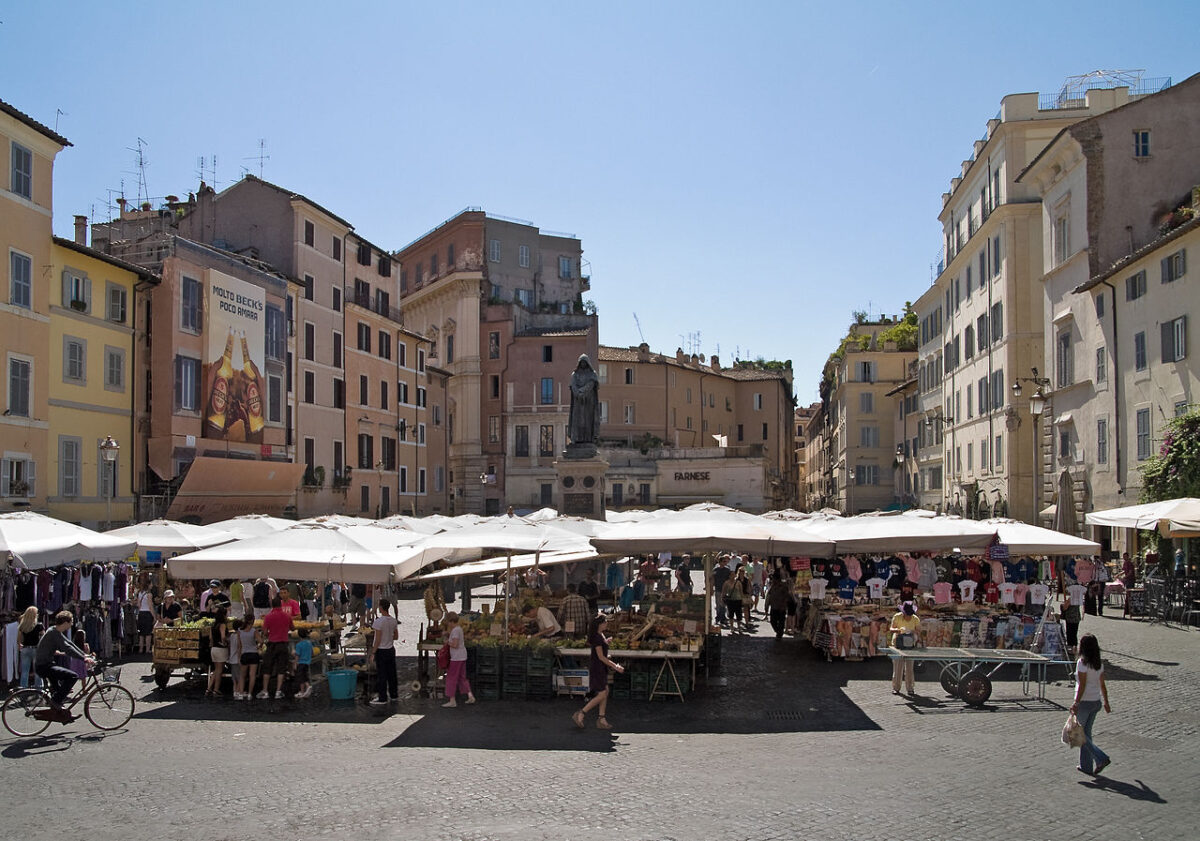
Exploring outdoor markets in Italy is one of the best ways to feel like a local. You’ll find everything from fresh produce to vintage treasures.
Rome is a must-visit for market lovers. For various food stalls, don’t miss Campo de’ Fiori. For a more eclectic mix, try the Porta Portese market, a paradise for treasure hunters.
In Florence, head to the Mercato Centrale, perfect for food lovers. It’s a dream—endless choices of delicious and fresh Italian foods. San Lorenzo Market is known for its leather goods and souvenirs, and it is ideal for picking up unique gifts.
Milan is a fashion-forward city, so naturally, its markets are a haven for stylish finds. You’ll find trendy clothes and accessories that reflect Italian fashion trends.
Your journey won’t be complete without visiting markets in Tuscany. Pienza’s weekly market sells seasonal products, homeware, and clothing. San Gimignano offers a picturesque setting in its historic squares, where you can find local products and have a delightful shopping experience.
Roaming these markets is not just about shopping; it’s about immersing yourself in Italian culture. Enjoy the lively atmosphere, taste local delicacies, and maybe even practice a bit of your Italian with friendly vendors.
Best Times To Visit

Italy offers a dazzling array of experiences, but the best times to visit largely hinge on what you’re most keen to see and do. Different seasons bring varying weather, crowd levels, and unique events that can shape your travel adventure.
Seasonal Highlights
Each season in Italy brings distinct charms.
Spring (April to June): Picturesque blooms and mild weather make exploring ideal. It’s also less crowded before the summer rush.
Summer (July to August): Expect bustling tourist spots and warmer weather. Although it can get hot, this is prime time for beach-goers and festivals.
Fall (September to October): With fewer tourists and comfortable temperatures, early fall is perfect for sightseeing and wine harvest festivals.
Winter (November to March): Colder months mean fewer crowds and lower prices. These months are great for visiting major cities like Rome or enjoying winter sports in the Alps or Dolomites.
Weather Considerations
The weather in Italy varies from region to region:
Northern Italy: Best visited in late spring and early fall when temperatures are comfortable. Summers can be hot, and winters are cold, especially in mountainous areas.
Central Italy: Mild winters and hot summers are characteristic here. Spring and fall are the most pleasant times to visit.
Southern Italy and Islands: These regions enjoy a Mediterranean climate. Winter is mild, and summer is hot but breezy. Spring and fall are ideal for travel.
Keep an eye on local forecasts and plan your attire to enjoy your journey fully. Don’t forget that different activities thrive under different weather conditions, so pack smart!
See Related: Best Places to Visit in Southern Italy
Getting Around Italy

Traveling in Italy can be convenient and enjoyable if you know the best ways to get around. Whether you prefer using public transportation, renting a car, or exploring cities on foot, many options suit your travel style.
Public Transportation Tips
Italy’s public transportation system is well-organized and efficient. High-speed trains like the Frecciarossa connect major cities such as Rome, Milan, Florence, Venice, and Naples. These trains are fast, affordable, and convenient. For shorter distances, regional trains can take you to smaller towns.
When in cities, buses, trams, and metro systems are your best friends. Single-use tickets range from €1.50 to €5, while daily passes cost between €4 and €15. Always validate your ticket before boarding to avoid fines.
In Venice, you can even travel by boat. The vaporetto (water bus) is an iconic and scenic way to get around. Public transport apps can help you plan your journeys and buy tickets online.
Renting a Car
Renting a car in Italy allows you to explore at your own pace, especially off-the-beaten-path destinations. Roads in Italy include ordinary roads, state roads (superstrada), and highways (autostrada). Superstrade are free and have a speed limit of 90 km/h, while autostrade are toll roads where you can drive up to 130 km/h.
Be sure to rent a smaller car to navigate narrow streets and find city parking. An International Driving Permit (IDP) and your regular license are required. Parking can be tricky and expensive in city centers, so look for park-and-ride options on the city’s outskirts.
Driving in Italy can be an adventure, but be prepared for aggressive drivers. Use Google Maps or a GPS to navigate, and brush up on Italian road signs and rules before you go.
Navigating Cities on Foot
Walking is often the best way to explore Italy’s cities. Many central areas in cities like Rome, Florence, and Venice are pedestrian-friendly. Narrow streets and hidden gems are best discovered on foot. Comfortable shoes are a must, as you’ll likely walk on cobblestone streets.
City maps and apps like Google Maps can guide you to popular attractions and less-known spots. Plus, walking helps you experience the culture up close. You can stop at a café, admire the architecture, or people-watch.
Combining walking with public transport works well for longer distances within a city. You’ll save time and see more. Don’t forget to stay hydrated and take breaks to enjoy your walk fully.

